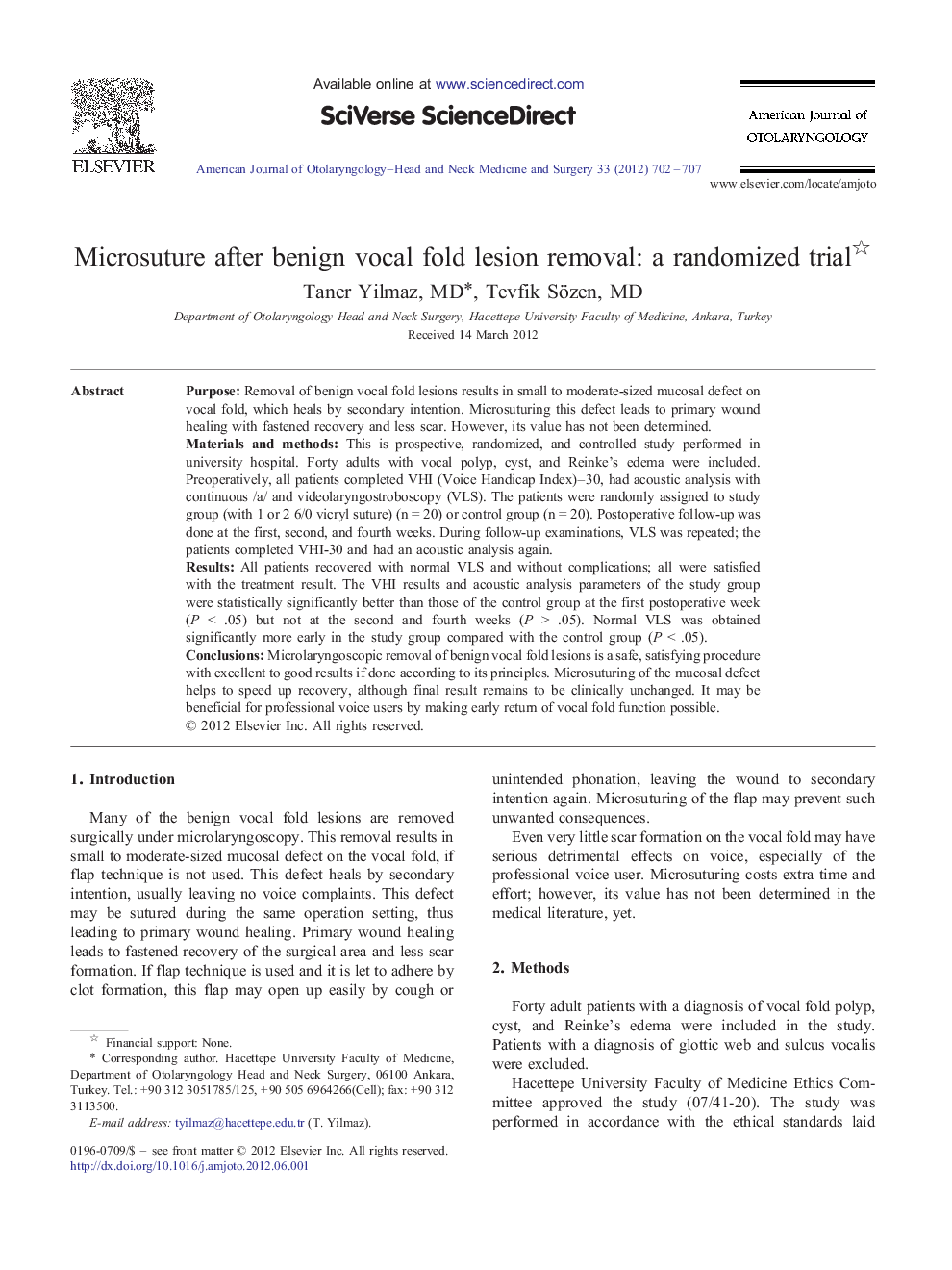| Article ID | Journal | Published Year | Pages | File Type |
|---|---|---|---|---|
| 4103317 | American Journal of Otolaryngology | 2012 | 6 Pages |
PurposeRemoval of benign vocal fold lesions results in small to moderate-sized mucosal defect on vocal fold, which heals by secondary intention. Microsuturing this defect leads to primary wound healing with fastened recovery and less scar. However, its value has not been determined.Materials and methodsThis is prospective, randomized, and controlled study performed in university hospital. Forty adults with vocal polyp, cyst, and Reinke's edema were included. Preoperatively, all patients completed VHI (Voice Handicap Index)–30, had acoustic analysis with continuous /a/ and videolaryngostroboscopy (VLS). The patients were randomly assigned to study group (with 1 or 2 6/0 vicryl suture) (n = 20) or control group (n = 20). Postoperative follow-up was done at the first, second, and fourth weeks. During follow-up examinations, VLS was repeated; the patients completed VHI-30 and had an acoustic analysis again.ResultsAll patients recovered with normal VLS and without complications; all were satisfied with the treatment result. The VHI results and acoustic analysis parameters of the study group were statistically significantly better than those of the control group at the first postoperative week (P < .05) but not at the second and fourth weeks (P > .05). Normal VLS was obtained significantly more early in the study group compared with the control group (P < .05).ConclusionsMicrolaryngoscopic removal of benign vocal fold lesions is a safe, satisfying procedure with excellent to good results if done according to its principles. Microsuturing of the mucosal defect helps to speed up recovery, although final result remains to be clinically unchanged. It may be beneficial for professional voice users by making early return of vocal fold function possible.
